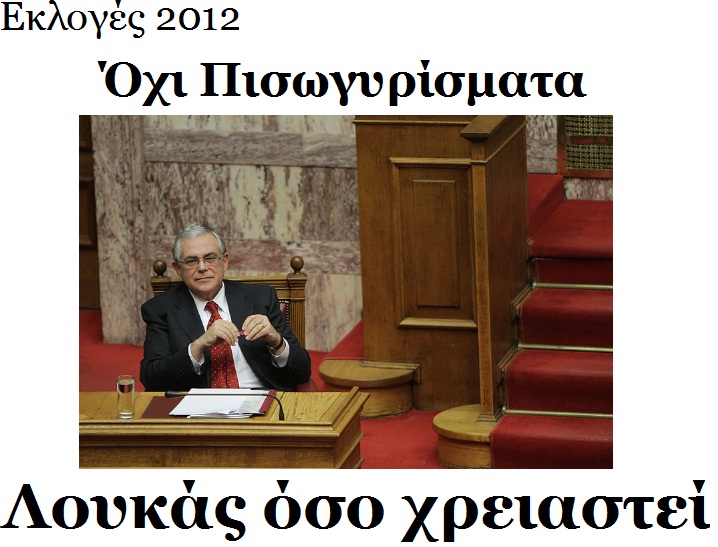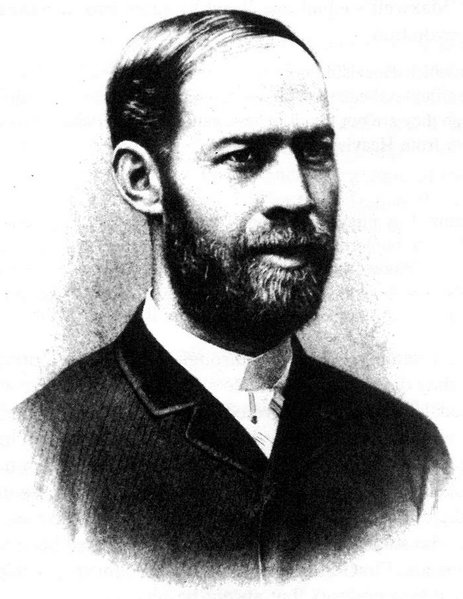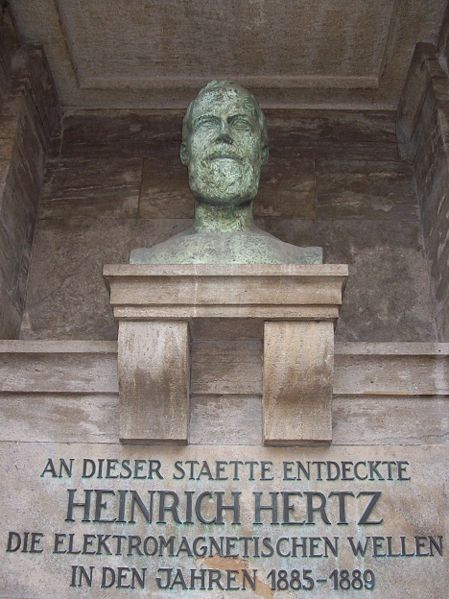<Back to Index>
- Physicist Heinrich Rudolf Hertz, 1857
- Poet James Russell Lowell, 1819
- Shahanshah of Persia Tahmasp I, 1514
PAGE SPONSOR



Heinrich Rudolf Hertz (February 22, 1857 – January 1, 1894) was a German physicist who clarified and expanded the electromagnetic theory of light that had been put forth by Maxwell. He was the first to satisfactorily demonstrate the existence of electromagnetic waves by building an apparatus to produce and detect VHF or UHF radio waves.
Hertz was born in Hamburg, Germany, into a prosperous and cultured Hanseatic family. His father, Gustav Ferdinand Hertz, was a writer and later a senator. His mother was the former Anna Elisabeth Pfefferkorn. He had three younger brothers and one younger sister.
While studying at the Gelehrtenschule des Johanneums in Hamburg, he showed an aptitude for sciences as well as languages, learning Arabic and Sanskrit. He studied sciences and engineering in the German cities of Dresden, Munich and Berlin, where he studied under Gustav R. Kirchhoff and Hermann von Helmholtz.
In 1880, Hertz obtained his PhD from the University of Berlin; and remained for post-doctoral study under Helmholtz. In 1883, Hertz took a post as a lecturer in theoretical physics at the University of Kiel. In 1885, Hertz became a full professor at the University of Karlsruhe where he discovered electromagnetic waves.
The most dramatic prediction of Maxwell's theory of electromagnetism, published in 1865, was the existence of electromagnetic waves moving at the speed of light, and the conclusion that light itself was just such a wave. This challenged experimentalists to generate and detect electromagnetic radiation using some form of electrical apparatus.
The first clearly successful attempt was made by Heinrich Hertz in 1886. For his radio wave transmitter he used a high voltage induction coil, a condenser (capacitor, Leyden jar) and a spark gap - whose poles on either side are formed by spheres of 2 cm radius - to cause a spark discharge between the spark gap’s poles oscillating at a frequency determined by the values of the capacitor and the induction coil. This first radio waves transmitter is basically, what we call today, an LC oscillator. To prove there really was radiation emitted, it had to be detected. Hertz used a piece of copper wire, 1 mm thick, bent into a circle of a diameter of 7.5 cm, with a small brass sphere on one end, and the other end of the wire was pointed, with the point near the sphere. He added a screw mechanism so that the point could be moved very close to the sphere in a controlled fashion. This "receiver" was designed so that current oscillating back and forth in the wire would have a natural period close to that of the "transmitter". The presence of oscillating charge in the receiver would be signaled by sparks across the (tiny) gap between the point and the sphere (typically, this gap was hundredths of a millimeter). In this experiment Hertz confirmed Maxwell’s theories about the existence of electromagnetic radiation.
In more advanced experiments, Hertz measured the velocity of electromagnetic radiation and found it to be the same as the light’s velocity. He also showed that the nature of radio waves’ reflection and refraction was the same as those of light, and established beyond any doubt that light is a form of electromagnetic radiation obeying the Maxwell equations. Hertz's experiments would soon trigger the invention of the wireless telegraph and radio by Marconi and others and TV.
In recognition of his work, the unit of frequency - one cycle per second - is named the “hertz”, in honor of Heinrich Hertz.
He always had a deep interest in meteorology probably derived from his contacts with Wilhelm von Bezold (who
was Hertz's professor in a laboratory course at the Munich Polytechnic
in the summer of 1878). Hertz, however, did not contribute much to the
field himself except some early articles as an assistant to Helmholtz in Berlin, including research on the evaporation of liquids, a new kind of hygrometer, and a graphical means of determining the properties of moist air when subjected to adiabatic changes.
In 1886 – 1889, Hertz published two articles on what was to become known as the field of contact mechanics. Hertz is well known for his contributions to the field of electrodynamics; however, most papers that look into the fundamental nature of contact cite his two papers as a source for some important ideas. Joseph Valentin Boussinesq published some critically important observations on Hertz's work, nevertheless establishing this work on contact mechanics to be of immense importance. His work basically summarises how two axi-symmetric objects placed in contact will behave under loading, he obtained results based upon the classical theory of elasticity and continuum mechanics. The most significant failure of his theory was the neglect of any nature of adhesion between the two solids, which proves to be important as the materials composing the solids start to assume high elasticity. It was natural to neglect adhesion in that age as there were no experimental methods of testing for it.
To develop his theory Hertz used his observation of elliptical Newton's rings formed
upon placing a glass sphere upon a lens as the basis of assuming that
the pressure exerted by the sphere follows an elliptical distribution.
He used the formation of Newton's rings again while validating his
theory with experiments in calculating the displacement which the
sphere has into the lens. K.L. Johnson, K. Kendall and A.D. Roberts
(JKR) used this theory as a basis while calculating the theoretical
displacement or indentation depth in
the presence of adhesion in their landmark article "Surface energy and
contact of elastic solids" published in 1971 in the Proceedings of the
Royal Society (A324, 1558, 301 - 313). Hertz's theory is recovered from
their formulation if the adhesion of the materials is assumed to be
zero. Similar to this theory, however using different assumptions, B.V. Derjaguin,
V.M. Muller and Y.P. Toporov published another theory in 1975, which
came to be known as the DMT theory in the research community, which
also recovered Hertz's formulations under the assumption of zero
adhesion. This DMT theory proved to be rather premature and needed
several revisions before it came to be accepted as another material
contact theory in addition to the JKR theory. Both the DMT and the JKR
theories form the basis of contact mechanics upon which all transition
contact models are based and used in material parameter prediction in
Nano-indentation and Atomic Force Microscopy. So Hertz's research from
his days as a lecturer, preceding his great work on electromagnetism,
which he himself considered with his characteristic soberness to be
trivial, has come down to the age of nanotechnology.
In 1886, Hertz developed the Hertz antenna receiver. This is a set of terminals that is not electrically grounded for its operation. He also developed a transmitting type of dipole antenna, which was a center fed driven element for transmitting UHF radio waves. These antennas are the simplest practical antennas from a theoretical point of view.
In 1887, Hertz experimented with radio waves in his laboratory. These actions followed Michelson's 1881 experiment (precursor to the 1887 Michelson - Morley experiment) which did not detect the existence of aether drift, Hertz altered the Maxwell's equations to take this view into account for electromagnetism. Hertz used a Ruhmkorff coil driven
spark gap and one meter wire pair as a radiator. Capacity spheres were
present at the ends for circuit resonance adjustments. His receiver, a
precursor to the dipole antenna, was a simple half-wave dipole antenna
for shortwaves. Hertz published his work in a book titled: Electric waves: being researches on the propagation of electric action with finite velocity through space.
Through experimentation, he proved that transverse free space electromagnetic waves can travel over some distance. This had been predicted by James Clerk Maxwell and Michael Faraday. With his apparatus configuration, the electric and magnetic fields would radiate away from the wires as transverse waves. Hertz had positioned the oscillator about 12 meters from a zinc reflecting plate to produce standing waves. Each wave was about 4 meters. Using the ring detector, he recorded how the magnitude and wave's component direction vary. Hertz measured Maxwell's waves and demonstrated that the velocity of radio waves was equal to the velocity of light. The electric field intensity and polarity was also measured by Hertz. (Hertz, 1887, 1888).
The Hertzian cone was first described by Hertz as a type of wave-front propagation through various media. His experiments expanded the field of electromagnetic transmission and his apparatus was developed further by others in the radio. Hertz also found that radio waves could be transmitted through different types of materials, and were reflected by others, leading in the distant future to radar.
Hertz helped establish the photoelectric effect (which was later explained by Albert Einstein) when he noticed that a charged object loses its charge more readily when illuminated by ultraviolet light. In 1887, he made observations of the photoelectric effect and of the production and reception of electromagnetic (EM) waves, published in the journal Annalen der Physik. His receiver consisted of a coil with a spark gap, whereupon a spark would be seen upon detection of EM waves. He placed the apparatus in a darkened box to see the spark better. He observed that the maximum spark length was reduced when in the box. A glass panel placed between the source of EM waves and the receiver absorbed ultraviolet radiation that assisted the electrons in jumping across the gap. When removed, the spark length would increase. He observed no decrease in spark length when he substituted quartz for glass, as quartz does not absorb UV radiation. Hertz concluded his months of investigation and reported the results obtained. He did not further pursue investigation of this effect, nor did he make any attempt at explaining how the observed phenomenon was brought about.
Hertz did not realize the practical importance of his experiments. He stated that,
- "It's of no use whatsoever [...] this is just an experiment that proves Maestro Maxwell was right - we just have these mysterious electromagnetic waves that we cannot see with the naked eye. But they are there."
Asked about the ramifications of his discoveries, Hertz replied,
- "Nothing, I guess."
His discoveries would later be more fully understood by others and be part of the new "wireless age". In bulk, Hertz' experiments explain reflection, refraction, polarization, interference, and velocity of electric waves.
In 1892, Hertz began experimenting and demonstrated that cathode rays could penetrate very thin metal foil (such as aluminium). Philipp Lenard, a student of Heinrich Hertz, further researched this "ray effect".
He developed a version of the cathode tube and studied the penetration
by X-rays of various materials. Philipp Lenard, though, did not realize
that he was producing X-rays. Hermann von Helmholtz formulated
mathematical equations for X-rays. He postulated a dispersion theory
before Röntgen made his discovery and announcement. It was formed on the basis of the electromagnetic theory of light (Wiedmann's Annalen, Vol. XLVIII). However, he did not work with actual X-rays.
In 1892, an infection was diagnosed (after a bout of severe migraines) and Hertz underwent some operations to correct the illness. He died of Wegener's granulomatosis at the age of 36 in Bonn, Germany in 1894, and was buried in Ohlsdorf, Hamburg at the Jewish cemetery.
Hertz's
wife, Elizabeth Hertz (maiden name: Elizabeth Doll), did not remarry.
Heinrich Hertz left two daughters, Joanna and Mathilde. Subsequently,
all three women left Germany in the 1930s to England, after the rise of Adolf Hitler.
Charles Susskind interviewed Mathilde Hertz in the 1960s and he later
published a book on Heinrich Hertz. Heinrich Hertz's daughters never
married and he does not have any descendants, according to the book by
Susskind.
His nephew Gustav Ludwig Hertz was a Nobel Prize winner, and Gustav's son Carl Hellmuth Hertz invented medical ultrasonography.
The SI unit hertz (Hz) was established in his honor by the IEC in 1930 for frequency, a measurement of the number of times that a repeated event occurs per second (also called "cycles per sec" (cps)). It was adopted by the CGPM (Conférence générale des poids et mesures) in 1964.
In 1969 (East Germany), there was cast a Heinrich Hertz memorial medal. The IEEE Heinrich Hertz Medal, established in 1987, is "for outstanding achievements in Hertzian waves [...] presented annually to an individual for achievements which are theoretical or experimental in nature".
A crater that lies on the far side of the Moon, just behind the eastern limb, is named in his honor. The Hertz market for radioelectronics products in Nizhny Novgorod, Russia, is named after him. The Heinrich-Hertz-Turm radio telecommunication tower in Hamburg is named after the city's famous son.
Although Hertz would not have considered himself Jewish, his "Jewish" portrait was removed by the Nazis from its prominent position of honor in Hamburg's City Hall (Rathaus) because of his partly "Jewish ancestry." Hertz was a Lutheran; and although his father’s family had been Jewish, his father had been converted to Catholicism before marrying. The painting has since been returned to public display.
Hertz is honored by Japan with a membership in the Order of the Sacred Treasure, which has multiple layers of honor for prominent people, including scientists. Heinrich Hertz was honored by a number of countries around the world in their postage issues and in Post World War II times has appeared on various German stamp issues as well.